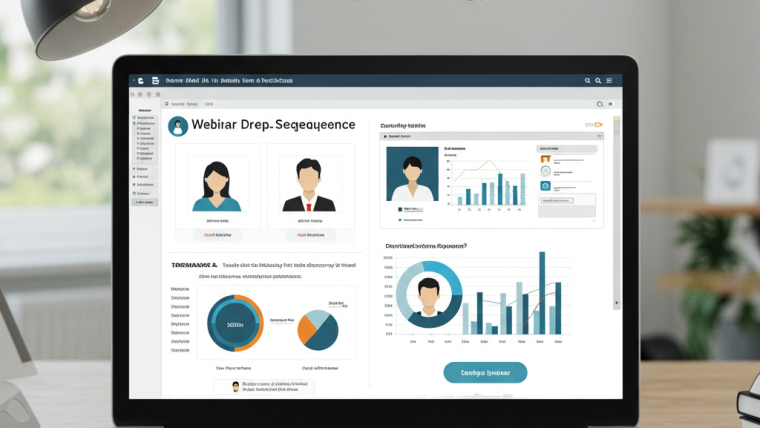Webinars have become an essential tool for businesses, educators, and thought leaders. Especially in a digitally connected world, webinars empower organizations to reach audiences across the globe, all from the comfort of their homes or offices. These interactive online seminars are used for marketing, training, and sharing industry insights.
But like any strategy, hosting webinars comes with its own set of advantages and challenges. If you’re thinking about adding webinars to your outreach efforts, it’s important to weigh the pros and cons carefully.
This post will explore the key benefits and potential pitfalls of hosting your own webinars so you can decide whether they are the right fit for your goals.
The Pros and Cons of Hosting Webinars
1. Increased Lead Generation
Webinars are a powerhouse tool for generating leads. When someone signs up to attend your event, they usually need to provide their email address and other details, which instantly grows your contact list.
What makes webinars so effective for lead generation? They attract audiences genuinely interested in your topic or offering, ensuring high-quality leads. By providing value through free knowledge or insights, you can position your brand as a valuable resource worth exploring further.
Example: Suppose you run a marketing consultancy. Hosting a webinar titled “How to Triple Your Website Traffic with SEO Strategies” would likely attract professionals or businesses seeking help with SEO. You now have a list of qualified individuals who are more likely to trust and engage with your services.
2. Enhanced Brand Authority
Hosting webinars gives you the chance to showcase your expertise, solidify your reputation, and earn the trust of your audience. Positioning your brand as a thought leader in your industry is invaluable in today’s competitive market.
By hosting a well-structured and informative webinar, you establish yourself as a go-to authority on the subject. This can be particularly impactful if your audience leaves the session equipped with actionable insights.
Pro Tip: Inviting guest experts to co-host webinars can add credibility and attract a broader audience, which further strengthens your brand’s image.
3. Cost-Effective Marketing
Unlike traditional in-person events, webinars offer significant cost-savings. You don’t need to rent a venue, pay for catering, or cover travel expenses. All you need is a reliable webinar platform, a good internet connection, and engaging content.
Many webinar tools, like Zoom and WebinarJam, also offer built-in marketing features, such as email invitations, registration pages, and analytics dashboards. These features help you maximize your efforts while keeping your budget in check.
Considering the high ROI (return on investment) of webinars, they can be one of the most efficient ways to market your business, especially for startups and small enterprises operating within tight budgets.
If you’re exploring new formats beyond traditional webinars, you might consider hybrid events as a flexible alternative.
Summary of Benefits at a Glance:
- High-quality leads from a targeted audience.
- Builds your credibility and expertise in your field.
- Lower costs compared to traditional events.
The Cons of Hosting Webinars
1. Technical Difficulties
No matter how much you prepare, there’s always a risk of technical issues. Audio problems, poor video quality, or glitches with the webinar platform can hurt the experience for both you and your attendees.
For someone trying your offering for the first time, such difficulties can leave a negative impression, potentially undermining your efforts to build authority or trust.
How to Mitigate:
- Test your equipment and platform thoroughly before going live.
- Have a backup plan in case technical issues arise (e.g., an alternate internet connection or device).
- Use a reliable webinar-hosting tool with strong customer support.
2. High Time Commitment
Hosting a successful webinar requires significant preparation. From promoting the event and designing the presentation slides to practicing your delivery and addressing attendee questions, the entire process can be time-intensive.
For someone juggling multiple responsibilities, fitting webinars into their schedule might feel overwhelming, especially if they’re unsure of its success.
Solution:
To streamline the process, consider pre-recording parts of your webinar or outsourcing creative tasks like slide design to freelancers. This can help reduce preparation stress while still producing a professional result.
3. Audience Engagement Challenges
Webinars often face challenges when it comes to maintaining audience engagement. With so many potential distractions (like email notifications or smartphone pings), keeping attendees actively involved can be tricky.
Additionally, if your topic is highly technical or complex, you may lose some participants who find it difficult to follow the content. Without face-to-face interaction, it’s also harder to read body language or adjust your delivery based on real-time feedback.
Engagement Tips:
- Use polls, Q&A sessions, and live chat features to keep your audience involved.
- Break up your presentation with dynamic visuals, videos, or even quick quizzes.
- Keep your webinar focused and concise. A 30-45 minute session works best for most audiences.
Summary of Challenges at a Glance:
- Risk of technical interruptions.
- Time and energy-intensive preparation.
- Struggles to engage participants virtually.
Weighing the Benefits and Drawbacks
Webinars can be a game-changing tool when executed properly, offering increased lead generation, improved brand authority, and cost-effective outreach. But to truly reap these benefits, you need to plan carefully and anticipate challenges such as technical disruptions, time demands, and keeping your audience engaged.
For businesses and professionals willing to invest time and resources into perfecting their webinars, the rewards far outweigh the risks. Whether you’re using them for marketing, education, or strengthening your community, webinars remain an invaluable method to connect with audiences at scale.
Take Your Webinars to the Next Level
If you’re ready to explore the opportunities webinars can offer, start by selecting the right platform and topic for your audience. Test your setup thoroughly, and don’t forget to interact with your attendees to leave a lasting impression.
Want to learn more about hosting a seamless webinar experience? Reach out to us for personalized advice that can help turn your next online event into a resounding success!








Webinar Analytics: A Complete Guide to Measuring Success and Improving Performance
The Ultimate Webinar Follow-Up Strategy to Turn Attendees into Customers
Webinar Accessibility Best Practices: How to Make Your Online Events Inclusive for All
Webinar Personalization: Tailoring Content to Audience Segments for Maximum Engagement